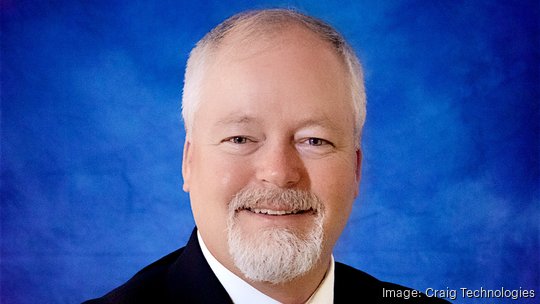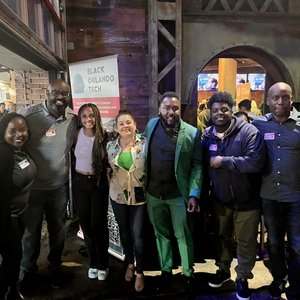
Craig Technologies — a Merritt Island-headquartered tech firm serving the aerospace industry which several years ago developed a digital platform called GovLead that helps it win more government contracts than average — now has made it available for other companies to use, as well.
Craig Technologies released its government contract interface platform on Sept. 27 after eight years of success using it internally. A few revisions made it market-ready, though much of the core functionality was developed over the years in response to specific demands. A single seat on the platform costs $65, and the company hasn't pinpointed revenue goals for the product yet, said Director of Business Development Greg Sheppard.
Sheppard said government contractors typically get about 30% of the contracts they go after, while Craig Technologies gets 47%. He said the difference largely is due to GovLead.
“The government tried to bring everything together and put all the opportunities on Sam.gov, and that’s a standard place to look,” he said. “But it’s not the only place. Sorting through all the opportunities on every possible website that has them easily can become a full-time job for one or even more people at a company that exists to fulfill government needs. I checked this morning and right now there are just under 1.1 million opportunities on Sam.gov alone.”
Why government contracts matter
A Brookings Institute report showed that metro Orlando has a strong base of businesses operating on federal contracts. These businesses help diversify the economy, and historically diverse economies that don’t rely to heavily on one or two industries are more stable and sustainable.
Craig Technologies was mired in that quest, he said, until the company’s former director of software development decided to automate as many operations as possible. He built a platform that would integrate with all the relevant websites and pull in and sort data based on filters set by the user, manage the steps through the application process, and even help anticipate the resources Craig Technologies would need for any contract the company won.

Orlando Inno asked Sheppard to explain the platform’s rollout and various functions.
What are the basics anyone would need to know to understand government contracting?
The process is the same whether you’re dealing with a state or federal government: They have a need. They put it out there as a request for proposals (RFP). You have to decide if you're going to spend the time and resources to answer that RFP and go after it.
How much money can companies get via government contract opportunities?
It depends on the level of the contract. A Phase 1 is usually $100,000 or $200,000. If they like the work you do, you can win a Phase 2 contract, you get a chance to solve a problem for the government, meet a bigger need. And that might be $1 million or $2 million. There are much bigger contracts, too. Right now, we are a subcontractor on an "indefinite delivery, indefinite quantity" contract worth as much as $1.93 billion.
What kinds of contracts does Craig Technologies go after?
There are a lot of programs with opportunities for us. One is the Small Business Technology Transfer (STTR) program, which connects small businesses with research groups, and they collaborate to commercialize tech solutions. Another is the Small Business Innovation Research (SBIR) program, and that’s all about stimulating the private sector and making sure the federal government is supporting small businesses. There are also "indefinite delivery, indefinite quantity" contracts. We have one with the Navy through a program called Seaport Next Generation. The Navy puts out tons of opportunities. There are websites for all these programs and more, and not all the opportunities appear on Sam.gov in a timely manner or ever.
How does Craig Technologies use GovLead to navigate all these opportunities?
First I set the filter to match our company description. Craig Technologies is a woman-owned, veteran-owned business, so those would be two criteria I filter for. I also add engineering services — but we don't build buildings or bridges or anything like that so I exclude the architectural engineering opportunities. The filters I select take those 1.1 million opportunities and funnel them down to something manageable. Because we're able to focus on those opportunities that are truly best for us, we are much more efficient about what we invest time in.
Are there any other notable GovLead features?
It helps us anticipate needs. We won a training contract, and GovLead showed us we would need 57 people to do the work here at headquarters, and it told us what their roles would need to be. For instance, human resources gets a notification and they know to prepare to onboard that many people or to bring them in a little at a time depending how much training is needed. Security knows it will need to do a certain number of background checks and maybe put them in for security clearances. There are a lot of other features, too. Creating this has been an iterative process over many years, and we’ve put it to the test and added or changed features based on our everyday experiences using it.
What made Craig Technologies decide to commercialize GovLead?
Some other businesses we know heard about it, and we gave them logins so they could try it out. People liked what it does and we decided to make it widely available. We see it as giving small businesses an advantage and helping diversify the economy. For example, when people think about Orlando, they typically think of theme parks: Universal, Disney. But Orlando is the center of modeling, simulation and training for the military, and there are huge amounts of money flowing through the Central Florida region to support that kind of work. When these companies can access and act on opportunities efficiently, they are stronger and they make the economies in their region healthier.
Craig Technologies
- Founded: 1999
- Top executive: CEO Carol Craig
- Location: 150 N. Sykes Creek Pkwy., Suite 200, Merritt Island 32953
- Contact: craigtechinc.com
Sign up here for The Beat, Orlando Inno’s free newsletter. And be sure to follow us on LinkedIn, Facebook and Twitter.







